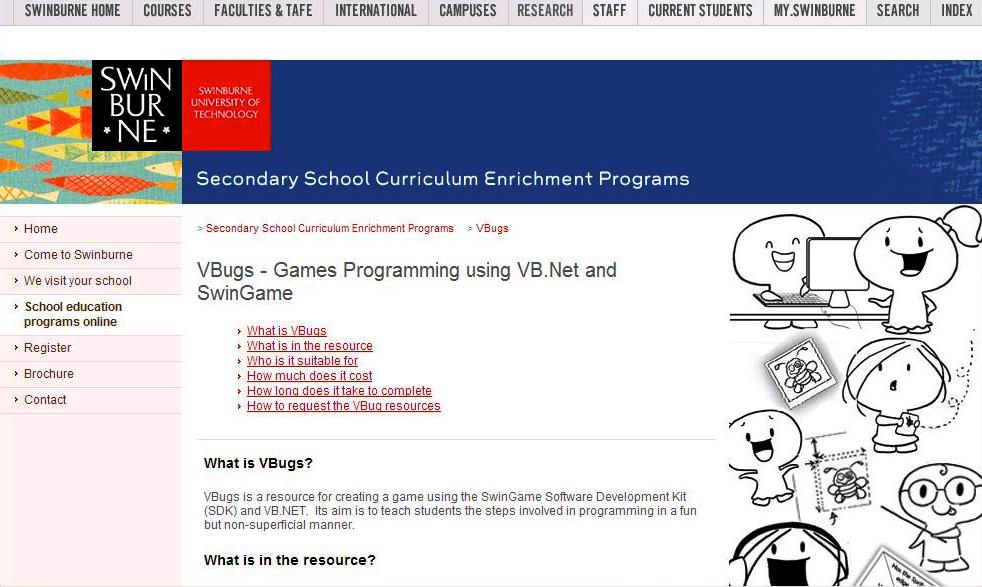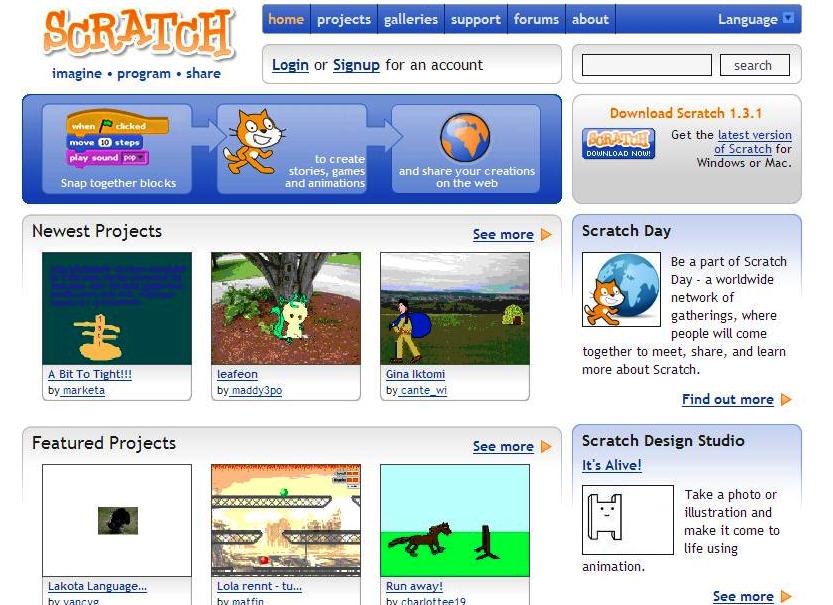Bright Ideas recently came across this gaming program for students in years 9 -11 developed by Swinburne University of Technology. From their website comes the following information:
VBugs – Games Programming using VB.Net and SwinGame
Click here to access the online form.
- What is VBugs
- What is in the resource
- Who is it suitable for
- How much does it cost
- How long does it take to complete
- How to request the VBug resources
What is VBugs?
VBugs is a resource for creating a game using the SwinGame Software Development Kit (SDK) and VB.NET. Its aim is to teach students the steps involved in programming in a fun but non-superficial manner.
What is in the resource?
The downloaded resource has a teacher and a student folder. The student resource consists of self paced tutorials with exercise sheets for the student to fill in by hand as they progress. The exercise sheets have been designed as a way of assessing student knowledge and understanding of the topic as they progress. The teacher folder contains solutions to both the worksheets and the project chapter by chapter as well as lesson plans for using VBugs in class.
Who is it suitable for?
The resource is suitable for students from Year 9 – 11. The resource takes students through the very basics of games programming through to the development of a fully interactive game with levels, scores, music, sound effects, keyboard and mouse input and animated sprites. Students who are keen and progress well, can go on to develop another SwinGame and can enter in the SwinGame 09 competition. This competition is to open to all secondary school students in Australia. Visit the SwinGame 09 website for more details.
How much does it cost?
No charge. As part of Swinburne’s effort to support secondary schools and enhance the profile of ICT, this resource has been developed for all secondary schools to use for free. Simply register (see below) and we will send you the password and the link to download the resource in full. Along with this link we can send out a hard copy of the book for the teacher’s reference.
How long does it take to complete?
This will depend on your class to some extent. VBugs has 9 chapters. Some chapters would take approximately 1 period to complete and others about 3. The final chapter is open ended so if some students finish faster than others they can keep working on improving their game for as long as you like. We recommend allowing about 16 classes. A run down of the chapters can be found below:
- Chapter 1 – Hello World
- Chapter 2 – Images, Fonts and Colours
- Chapter 3 – Movement
- Chapter 4 – Sound and Keyboard
- Chapter 5 – Mouse input and Animation
- Chapter 6 – Methods in VB.NET
- Chapter 7 – Objects and Classes
- Chapter 8 – Level and Score
- Chapter 9 – Extensions and Additions
How to request the VBug resources?
After filling out the form, you will be emailed a username and password to access VBugs.


